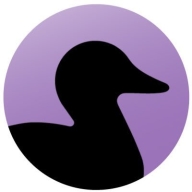

Coverity Static and GitGuardian Platform compete in the security software category. Coverity Static may have the upper hand due to its strong integration capabilities, while GitGuardian stands out with rapid secret scanning and collaboration features.
Features: Coverity Static offers various features, such as integration with numerous CI/CD tools, detailed defect analysis, and a stable platform to enhance code quality. It reduces false positives effectively and helps improve developer productivity. GitGuardian Platform, on the other hand, is known for its real-time secret scanning with a focus on exposed secrets and comprehensive detection capabilities. It provides an intuitive interface that aids collaboration between developers and security teams, which is crucial for immediate vulnerability management.
Room for Improvement: Coverity Static could improve by offering a more user-friendly interface, supporting additional programming languages, and expanding integrations with IDEs like Eclipse. Users also cite challenges with its high false positive rates and complex UI design. GitGuardian could benefit from enhanced user documentation, the addition of a mobile application, and better integration with platforms like Azure DevOps. Improved response processes for issue remediation and enhanced alert systems would also increase its effectiveness.
Ease of Deployment and Customer Service: Coverity Static is mainly deployed on-premises with hybrid cloud options, providing robust support such as SLAs, though customer service responsiveness can vary. GitGuardian enjoys ease of deployment in public cloud environments and offers responsive technical support. However, enhancements in support could further improve user satisfaction. Both products show commitment to addressing user issues, yet GitGuardian's flexible deployment options give it an edge.
Pricing and ROI: Coverity Static is generally expensive, with pricing models based on user counts or codebase size, which can limit its accessibility for larger teams, yet users report solid ROI through early defect identification. GitGuardian offers a pricing model that is cheaper for smaller teams but could become costly as the team size grows. However, its efficient detection capabilities and security focus provide significant value, with a free tier available, appealing to small teams seeking cost-effective solutions.
| Product | Market Share (%) |
|---|---|
| GitGuardian Platform | 0.7% |
| Coverity Static | 6.0% |
| Other | 93.3% |


| Company Size | Count |
|---|---|
| Small Business | 8 |
| Midsize Enterprise | 6 |
| Large Enterprise | 31 |
| Company Size | Count |
|---|---|
| Small Business | 10 |
| Midsize Enterprise | 9 |
| Large Enterprise | 13 |
Coverity gives you the speed, ease of use, accuracy, industry standards compliance, and scalability that you need to develop high-quality, secure applications. Coverity identifies critical software quality defects and security vulnerabilities in code as it’s written, early in the development process, when it’s least costly and easiest to fix. With the Code Sight integrated development environment (IDE) plugin, developers get accurate analysis in seconds in their IDE as they code. Precise actionable remediation advice and context-specific eLearning help your developers understand how to fix their prioritized issues quickly, without having to become security experts.
Coverity seamlessly integrates automated security testing into your CI/CD pipelines and supports your existing development tools and workflows. Choose where and how to do your development: on-premises or in the cloud with the Polaris Software Integrity Platform (SaaS), a highly scalable, cloud-based application security platform. Coverity supports more than 20 languages and 200 frameworks and templates.
GitGuardian is a comprehensive platform focused on enhancing Non-Human Identity security by integrating Secrets Security and Secrets Observability to detect and manage secrets across development environments.
As cybersecurity threats increasingly target NHIs like service accounts and applications, GitGuardian offers a robust solution by supporting over 450 types of secrets and deploying honeytokens for additional defense. Trusted by leading organizations and developers, its monitoring and quick alert system enable effective detection and management of sensitive data, strengthening operational security across platforms.
What are the key features of GitGuardian?In the tech industry, GitGuardian is employed to safeguard APIs and sensitive credentials across code repositories like GitHub. Companies benefit from instant alerts and integrations with tools like Slack, effectively managing risks and enhancing security policies. While popular in sectors dependent on development agility, there is room for further improvement in customization and integration to meet specific industry needs.
We monitor all Static Application Security Testing (SAST) reviews to prevent fraudulent reviews and keep review quality high. We do not post reviews by company employees or direct competitors. We validate each review for authenticity via cross-reference with LinkedIn, and personal follow-up with the reviewer when necessary.